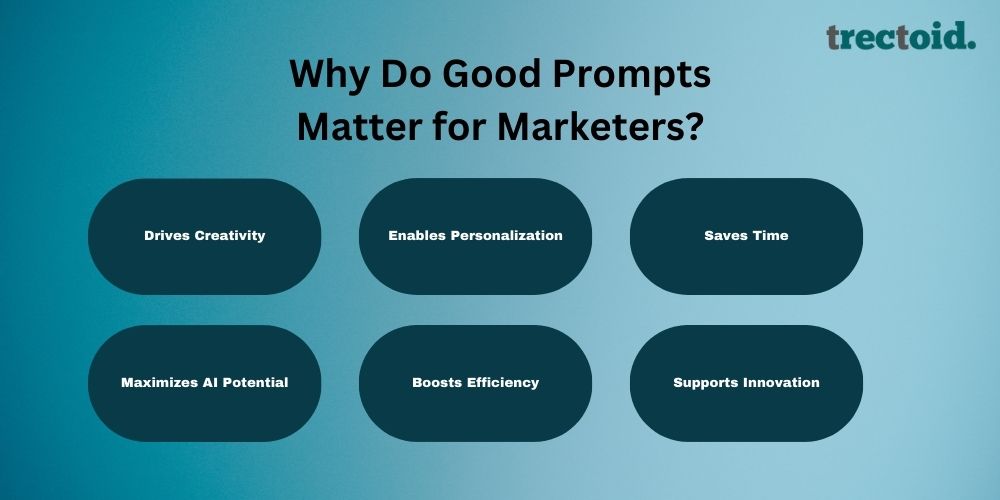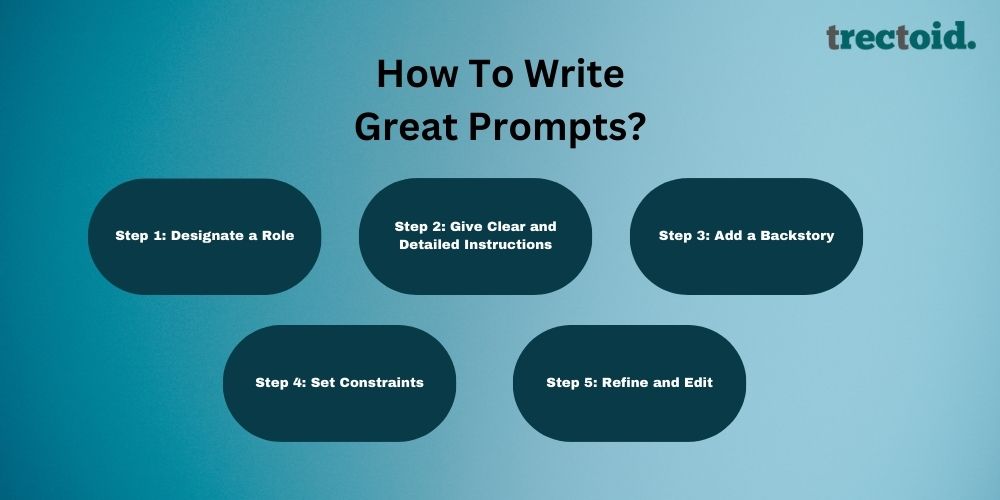Summary: In this blog, we talk about how AI tools like ChatGPT, Claude, Perplexity, and Gemini are transforming the marketing landscape by enabling faster and more personalized content for the customers, but without clear and effective prompts, these tools will be just another fad with no real results. Effective prompts ensure creativity, efficiency, personalization and, time saving. A step-by-step guide for better prompts can be implemented to get effective results. A real-world case study of New York gives us insights into how better prompting leads to great results. At last, with every technology comes the risks. Here, we have discussed the most common risks that usually come solely depending on such technology, and we should not forget about our role as a human being.
As a marketer, you’ve probably been there, typing out a quick prompt like “Write me an email” and hitting enter, only to get back something that feels flat, generic, and completely uninspired. Instead of creating content that grabs attention and drives action, you end up with something that sounds like it came from a template factory and totally lacks the brand voice.
LLMs (large language models) such as ChatGPT, Claude, Perplexity, and Gemini are stepping up as ultimate marketing assistants. It’s like having a creative partner who is always ready to brainstorm and deliver.
In today’s digital age, where customer attention is short-lived, marketers are always on the lookout for smarter ways to connect with their customers and make an impact. These AI tools are revolutionizing marketing by making it easier than ever to create personalized, engaging content that drives results.
But If you don’t have an understanding of how to craft effective prompts, tools like ChatGPT will remain just another fad that doesn’t deliver meaningful results.
In this blog, we’ll dive into why writing great prompts is absolutely essential and show you a step-by-step blueprint for creative prompt writing.
Why Do Good Prompts Matter for Marketers?
You entered a cafe and vaguely asked for “something to drink.” The barista might hand you a glass of water when you were craving a caramel latte. Now, think of LLMs like ChatGPT as that barista. If your request (or prompt) is unclear, you’re unlikely to get what you need.
But with precise instructions, “I’d like a medium caramel latte with extra foam,” you will get exactly what you imagined.
For marketers, this scenario perfectly illustrates the importance of great prompts. In an industry driven by creativity, efficiency, and results, the ability to craft clear, detailed prompts can make all the difference.

Let’s explore why:
- Drives Creativity: Clear prompts inspire unique and engaging content tailored to the audience.
- Enables Personalization: Helps create targeted messages that connect with specific customer needs.
- Saves Time: Reduces back-and-forth editing and delivers results faster.
- Bridges Vision and Execution: Transforms abstract ideas into tangible, impactful outputs.
- Maximizes AI Potential: Guides tools like ChatGPT to deliver high-quality, brand-aligned results.
- Boosts Efficiency: Streamlines workflows by providing detailed, actionable instructions.
- Supports Innovation: Generates fresh ideas and strategies for campaigns or problem-solving.
Just like placing a coffee order, interacting with AI tools demands clarity and precision. So, the next time you sit down to craft a prompt, remember: the clearer your “order,” the better your “drink.”
How AI Is Revolutionizing Content Creation for Marketers
- 60% of marketers say AI tools help them work better and faster.
- 76% of generative AI users rely on tools like ChatGPT for tasks like basic content creation and writing marketing copy.
- A global survey found that 36% of content marketers spend less than an hour a week creating content with AI tools.
Exploring Different Writing Tools
AI is revolutionizing the marketing world at a blazing speed, with a flood of tools making it hard to choose the right one.
The key to unlocking their potential lies in crafting creative and tailored prompts. For marketers, this means clear, specific, and context-rich prompts can lead to innovative ideas, time-saving solutions, and highly relevant content.
By mastering the art of prompt writing, you’ll not only maximize the value of these tools but also stay ahead in the race.
Comparative Analysis
| Feature | ChatGPT | Claude | Perplexity | Gemini |
| Strength | Versatile, easy to use | Conversational depth | Rapid information retrieval | Multitasking and personalization |
| Best For | Persuasive sales page and strategies | Ad copy, long-form content | Market research, quick insights | Email campaigns, social media content |
| Unique Capability | Interacts in a conversational way | Handles complex prompts | Provides concise answers | Combines creativity with efficiency |
Experiment with these platforms to discover which one aligns best with your goals and take your marketing efforts to the next level.
Step By Step Guide For Great Prompts
Step 1: Designate a Role
When you specify a role, you’re essentially guiding the AI to adopt a particular mindset, tone, and level of expertise.
For example, instead of just saying, “Write a product description,” say, “You are a professional copywriter specializing in luxury brands. Assigning a role makes the AI take on a specific perspective.
Step 2: Give Clear and Detailed Instructions
Now, the clearer you are, the better. AI doesn’t guess; it follows directions.
Don’t say, “Write a blog about social media,” be specific: “Write a 500-word blog about the importance of Instagram for small businesses. Include three real-world examples.”
Think of it like guiding a teammate, giving specific instructions will lead to better results.
Step 3: Add a Backstory
Giving the AI some backstory or context helps it understand the purpose of your request. Basically, the ‘why’ behind what you’re asking for. This makes the output much more relevant and useful.
You can include details like the tone or style you want or even share things like an image or a link to your website to give more clarity.
For example, if you’re writing an email, paste your draft into the tool so it can analyze and improve the brand voice, tone, and style. The more info you provide, the better the outcome.
Step 4: Set Constraints
This step is about boundaries.it will help in focusing the AI’s energy. Constraints push the AI to stay within your desired framework, avoiding fluff or irrelevant details.
ChatGPT is built to follow your instructions, including any rules or limits you set. Don’t be afraid to experiment and see how it reacts to different constraints. You can be as specific or as creative as you want with your constraints.
Let’s say:
“Keep sentences short and simple.”
“Don’t use complicated words.”
“Do not mention fictional characters.”
Whatever limits you choose, ChatGPT will work within them.
Step 5: Refine and Edit
Finally, don’t stop at the first draft. AI gives you a starting point, not a polished masterpiece. After you get the response, review it. Is it what you want or imagined it to be?
Use follow-up prompts like, “Can you make this sound more engaging?” or
“Simplify this language for a younger audience.” The more you refine, the closer you get to perfection.
It’s the refining process that makes the work shine, and the same applies to AI-generated content.

CASE STUDY: How Effective Prompts Boost Results
When discussing the power of AI in marketing, real-world examples like the New York Times’s story stand out, the way they have embraced AI to enhance the connection with their audience.
Let us tell you about this story, which shows just how powerful AI can be in journalism and marketing.
You’ve probably heard of the New York Times, one of the most renowned publications in the world, right?
The New York Times explained in their blog they use AI-generated prompts to craft compelling article headlines that deeply resonate with their readers. By leveraging AI to analyze reader behavior, preferences, and trends, the team can create headlines that not only grab attention but also spark curiosity and align with their audience’s expectations. As artificial intelligence gets more advanced, the New York Times is finding new ways to integrate this technology into their journalism.
Artificial intelligence is helpful in most of the areas of work, but with effective prompting you can actually make it more powerful and closely align with your goals. Whether you’re creating emails, social media posts, or headlines, learning this skill can make a huge difference.
Why You Shouldn’t Rely On AI Solely?
AI is everywhere. It’s on our phones, curating our playlists and predicting our texts. It’s on social media, shaping what we see and when we see it. It feels like AI has woven itself into every corner of our lives.
But despite its presence, like any other technology, AI also has some limitations –
1. Human Creativity comes from lived experiences. the emotions, connections, and unique moments that shape us. When a marketer creates a campaign, they’re not just focusing on data; they’re thinking about the emotions behind what customers do.
AI, in contrast, can only work within the patterns it’s been taught. It doesn’t break boundaries or think differently; it mimics what already exists.
2. Creative Strategy: No doubt AI can spit out countless ideas and content for an ad in no time, but choosing the best approach that aligns with a brand’s long-term vision and values is a human skill.
One such example is Airbnb and its “Belong Anywhere” campaign. The campaign wasn’t just about promoting vacation rentals; it was about selling the feeling of belonging, of finding a home away from home no matter where you are in the world. It spoke to the deeper emotional connection people have with travel, making them feel welcomed and accepted.
3. Overdependence On AI: Relying too much on AI can create a dangerous dependency, weakening human marketers’ critical thinking and strategic decision-making abilities.
By overusing AI, you may start to trust its suggestions blindly, reducing creativity and adaptability.
Marketing needs quick thinking to quickly adjust strategies based on consumer behaviour and unexpected events.
It’s a Wrap
In this AI-driven world, being human is your superpower.
AI is here to support us, helping to improve our creative ideas and get them to the right people at the right time. But, to truly harness its power, we need to master the art of crafting great prompts.
A well-thought-out prompt can transform an AI response from good to great, guiding the machine to deliver results that align with our goals. When we combine great prompts with our human creativity, that’s where the real magic happens.
